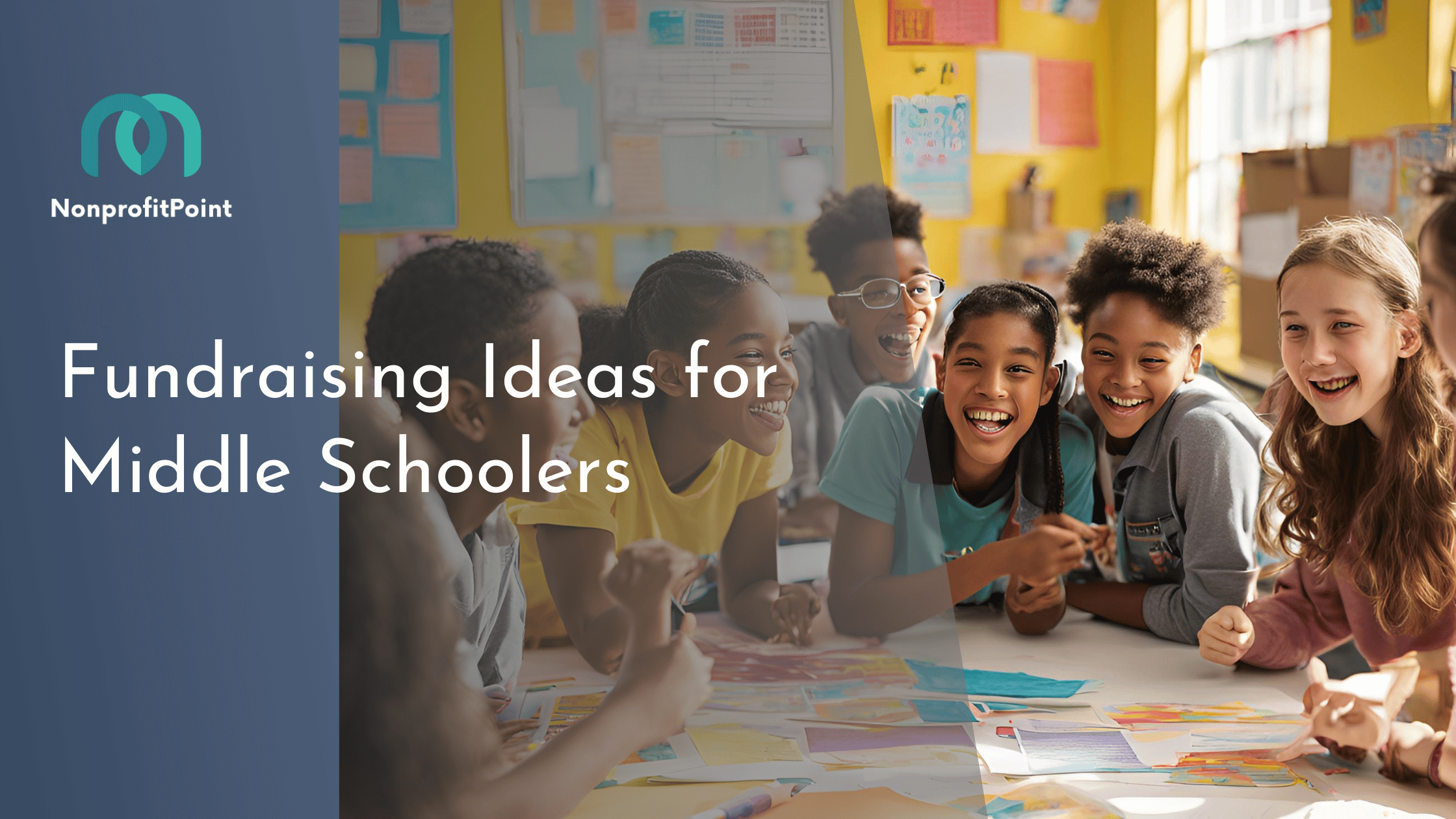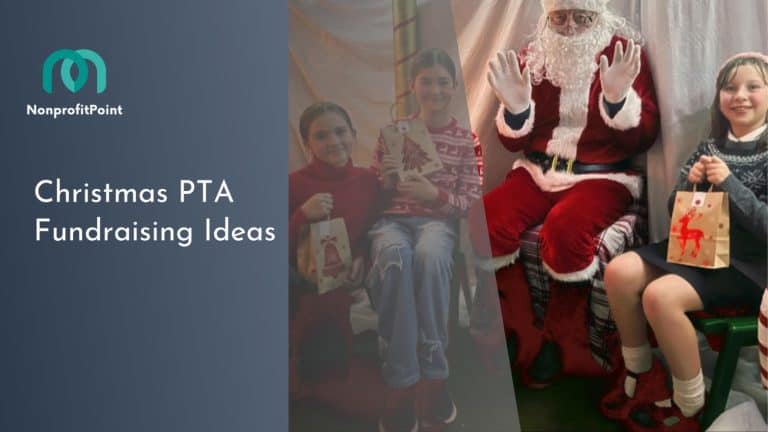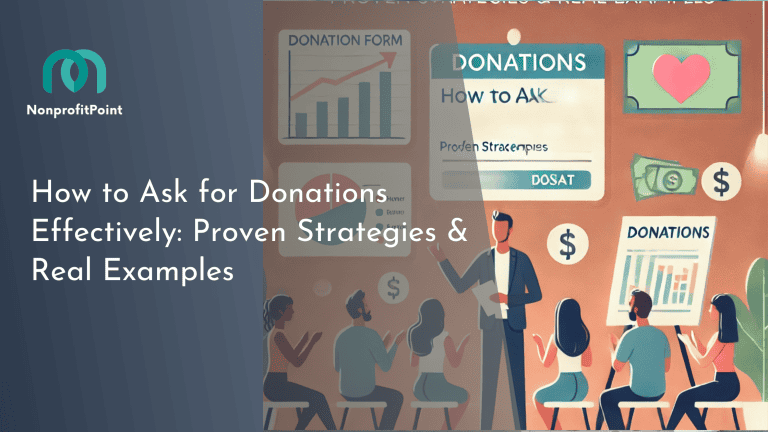10 Best Fundraising Ideas for Middle Schoolers to Inspire Change in 2025
Fundraising for middle schoolers is more than just a means to an end—it’s a powerful blend of education, empowerment, and community involvement. In an age where the next generation is expected to be innovative and socially responsible, school fundraising provides a perfect platform to nurture these skills early on. Whether raising money for a school trip, supporting a local charity, or funding a school project, these activities teach students the value of teamwork, and resourcefulness. Beyond the dollars raised, such initiatives instill a sense of pride and accomplishment in students, as they witness firsthand the impact of their efforts.
With the decline of traditional funding sources, schools are increasingly turning to creative and engaging fundraising activities to fill the gap. This blog post will delve into some of the most innovative fundraiser ideas tailored specifically for middle schoolers, infused with fun and practicality.
From technology-driven events that harness the power of social media to timeless community-centric bake sales, these ideas are designed to captivate the middle school spirit while achieving tangible goals. Join us as we explore ways to ignite passion, foster leadership, and, most importantly, make a difference—both within school walls and beyond. Dive in, and discover how you can turn these opportunities into unforgettable educational experiences!
Here are 10 Fundraising Ideas for Middle Schoolers That Inspire Change:
1. Art Auction Night
An art auction night can be a remarkable event for middle schoolers, as it not only raises funds but also gives students a platform to express their creativity and artistic skills. The preparation can begin weeks in advance, with art teachers guiding students through the process of creating pieces specifically for the auction. This can include paintings, drawings, sculptures, or even digital art. Students can work individually or collaborate on larger pieces, fostering teamwork and camaraderie.
To make the event more appealing, consider turning it into a gala night with a theme, like “A Night in Paris” or “Under the Stars”. Decorations can reflect the theme and create an ambiance that transforms the school hall or gymnasium into an art gallery. Encourage students to take part in all aspects of the event, from setting up the exhibit space to greeting guests at the door. This involvement boosts their confidence and teaches them event management skills.
For the auction itself, hire a charismatic auctioneer — perhaps a talented parent or a teacher. Introduce each piece with a small story or description provided by the student artist, helping bidders connect with the work. In addition to selling art, you might offer refreshments for a small fee or hold a raffle using donated items. Each element contributes to the excitement of the event, ensuring it’s a memorable experience shared among students, staff, and the community. The proceeds can be used for an art-related field trip, new supplies for the art department, or a restoration project within the school.
2. Thematic Fun Run / Walk-a-thon
Thematic fun runs or walk-a-thons are dynamic fundraising opportunities that seamlessly blend fitness, fun, and charity. The key to a successful event is selecting a whimsical theme that resonates with the students. Whether it’s superheroes, pajama day, or a throwback to the 1980s, the theme can add a layer of excitement and creativity. Encourage students and participants to dress according to the theme, which not only enhances their experience but also sparks conversation and community interest.
Leading up to the event, students can gather pledges from family, friends, and neighbors who agree to sponsor them per lap or mile completed. This not only spreads awareness of the fundraiser but also engages the wider community. Incorporating additional elements like music, face painting booths, or refreshment stands can transform the event into a mini carnival, attracting more spectators and potential contributors.
On the day of the run, emphasize not just the competitive aspect but also the personal goals each participant sets for themselves. This encourages inclusivity, allowing everyone to feel a sense of accomplishment by the end of the event. Conclude with a celebration ceremony, highlighting top fundraisers, creative costumes, or most-improved runners. Share tales and photos of the day on the school’s social media platforms to extend the event’s reach and solidify its success. Proceeds can support school programs, sports teams, or a charity chosen by the students.
3. Talent Show Extravaganza
A talent show extravaganza provides middle schoolers with the opportunity to share hidden talents and passions with their peers, teachers, and family members. As you prepare for the event, school auditions can be held for interested students, ensuring a diverse lineup of talents – from singing and dancing to magic tricks and stand-up comedy. Teachers or older students can serve as mentors, helping participants hone their acts, which fosters an environment of learning and encouragement.
To entice audience engagement, consider incorporating audience voting to determine the “People’s Choice” award. Voting can be done through donations, where attendees drop money into jars representing their favorite acts. This element not only increases fundraising but also adds an exciting competitive edge. Additionally, organizing small intermission performances by teachers or staff can keep the energy up and provide light-hearted entertainment.
On the night of the talent show, transform the school auditorium into a lively venue with lights, decorations, and a professional sound system. Sell tickets in advance and at the door, and offer concessions during intermissions. Highlighting each performer by sharing a brief background story or rehearsing journey before they hit the stage helps build anticipation and connects the audience to the performers. All proceeds can go towards student initiatives, arts programs, or perhaps a charity they choose to support.
4. Student Cookbook Sale
Creating and selling a student cookbook is not only a fundraiser but a chance to celebrate the diverse family backgrounds and culinary skills of the students. Start by inviting families to submit cherished recipes that have special meaning or cultural significance. This can be an opportunity to share stories behind each dish, making the cookbook as much about family history as it is about cooking. Encourage students to take part in every step of the process, from selecting recipes to designing and illustrating the cookbook, providing them with valuable experience in publishing and marketing.
Once the recipes and stories are compiled, work with a local printer or utilize online publishing services to produce the cookbooks. To add personal touches, consider featuring student drawings or photographs of the dishes. Promote the cookbook through school newsletters, social media, and community events, creating a buzz that highlights the cookbook as a perfect gift, especially before holidays or school breaks.
To maximize engagement, organize a cookbook launch event where students can prepare select recipes for tastings. Invite the community to sample foods, meet the student chefs, and purchase the cookbook in person. This not only drives sales but also creates a sense of unity and pride among students and families. The funds raised can support nutrition programs, fund school gardens, or contribute to hosting more community-related educational events.
5. Escape Room Challenge
An escape room challenge can be an exciting and intellectually stimulating fundraiser that calls upon students’ problem-solving skills and teamwork. The concept is simple but offers deep engagement: students must work together to solve puzzles and riddles, leading them to “escape” from a scenario within a limited time. Collaborate with teachers, particularly those in the science or math departments, to design puzzles that are challenging yet age-appropriate, encouraging critical thinking and creativity.
Creating multiple themed rooms can add variety and increase participation. Themes might range from historical adventures where students decode ancient scripts to futuristic settings involving high-tech gadgets. Utilize available school resources, transforming classrooms or sections of the library into immersive environments. Props, sound effects, and lighting can enhance the experience, making it feel like a professional escape room.
Hosting this event on a weekend and opening it to families and educators can increase community involvement. Charge an entry fee for teams wishing to take on the challenge and offer a local business-sponsored prize for groups that complete the escape in record time. By sharing success stories and photos on social media, you can extend the reach and impact of the event. Funds raised from the escape room challenge can be allocated towards improving school facilities, purchasing new educational materials, or funding student-led community service projects.
6. Digital Game Tournament
With gaming being a major interest for many middle schoolers, organizing a digital game tournament can tap into this enthusiasm while raising funds. Select popular games that are age-appropriate and widely played among students. The tournament can be organized in a league style, hosted over several days to maximize participation and engagement. Beyond video games, you might include digital board games or educational games to promote variety.
To involve as many students as possible, consider separate categories or divisions based on grade levels or game genres. Charge an entry fee, with proceeds supporting school initiatives or charities chosen by the students. Encourage local businesses to sponsor the event by donating prizes or funds in exchange for advertising opportunities during the tournament.
Stream the matches live on social media platforms or through a private video link, increasing the event’s audience and encouraging donations from viewers. To add a layer of excitement, have students or teachers commentate on the matches, fostering community spirit and engagement. Use the tournament to promote discussions around digital citizenship, teamwork, and strategic planning, turning a fun gaming afternoon into an educational experience as well. After the tournament, sharing highlight reels or match reports can keep the excitement going and provide continued fundraising opportunities through online donations.
7. Community Service Auction
A community service auction is a unique idea that places the focus on students giving back, offering their time and skills to community members in exchange for financial support. Students can auction services such as lawn care, babysitting, pet walking, tutoring, or technology assistance. This event not only raises funds but also strengthens the bond between students and their community, as they actively contribute their skills and effort.
To organize the service auction, start by collecting a list of services students are willing and able to provide. Then, set up an auction event where community members can bid for these services. Make sure to advertise the event well in advance using school newsletters, social media, and local businesses’ bulletin boards. The services on offer should be detailed and diverse, appealing to a wide range of interests and needs in the community.
On auction day, create an engaging atmosphere where students can present their services. This might involve brief “service pitches” where students explain their offerings and why community members might find them valuable. Auctioneers, possibly enthusiastic teachers or student council members, can facilitate bidding and maintain a lively environment. This event not only generates funds for school projects but also instills a sense of responsibility and work ethic in students, who may discover new interests and skills through the services they provide.
8. Eco-Friendly Crafts Fair
An eco-friendly crafts fair serves the dual purpose of raising funds while promoting sustainability and environmental awareness. This hands-on event allows students to create and sell crafts made from recycled, upcycled, or sustainably sourced materials. To kickstart the preparation, hold workshops on crafting techniques that use everyday waste materials. Teachers and community artisans can guide students, sharing skills that highlight creativity and resourcefulness.
Encourage students to explore a range of crafts, from jewelry and home decor to clothing and plant holders. These items can be collected over several weeks leading up to the fair, giving students ample time to perfect their crafts and learn about the environmental impact of materials used. This learning component can be supported by inviting local environmental groups to give talks or demonstrations, emphasizing the importance of sustainable living practices.
On the day of the fair, set up booths similar to a market, where students can display and sell their crafts. Integrate interactive workshops where attendees, including children and adults, can learn how to make their own eco-friendly crafts. This involvement boosts the community’s interest in sustainable practices, creating a ripple effect of awareness and change. Funds raised from the fair can be directed towards eco-friendly initiatives within the school, such as a recycling program or a garden project, making the crafts fair a meaningful endeavor with both immediate and long-term benefits.
9. DIY Science Fair
Hosting a DIY (Do It Yourself) science fair can be an incredibly empowering experience for middle schoolers, combining creativity, scientific inquiry, and public speaking. This event gives students the chance to dive deep into subjects they find fascinating, conducting experiments or building models that reflect their interests. As opposed to following set instructions, students design their own experiments, encouraging originality and critical thinking.
To begin, invite students to pick a question or topic that intrigues them. This could range from exploring renewable energy sources to investigating the physics behind sports. Encourage collaboration by allowing group projects, which enhance teamwork and allow students to share diverse skills and ideas. Teachers and local scientists can act as mentors, providing guidance on the scientific method and helping to refine students’ projects.
Organize the science fair as a public event, open to family and community members. Each student or group can set up a booth with their project displays, including charts or digital presentations that explain their methods and results. Encourage students to prepare short presentations, helping them develop communication skills as they explain their projects to visitors. To make the event more engaging and competitive, offer awards in various categories such as best presentation, most innovative project, or best application of scientific principles. The funds raised from entrance fees and donations could be used to upgrade science lab equipment or fund a class trip to a science museum, further enhancing the students’ educational experience.
10. Flash Mob Fundraiser
A flash mob fundraiser is a lively and unexpected way to draw attention and raise funds for school projects or charity initiatives. The excitement of a flash mob comes from its spontaneity and the way it transforms an ordinary space into a stage for a coordinated performance. This event starts with careful planning and choreography, guided by students or drama teachers. The performance could include a dance routine, a musical piece, or even a theatrical skit, tailored to fit a public location like a park or shopping mall.
Preparation begins weeks in advance, with students practicing in secret to ensure the element of surprise. Choreography should be simple enough to involve many students, allowing performers of all skill levels to join in. Select a popular song or theme that resonates with the students and potentially attracts a crowd. On the day of the flash mob, ensure it occurs at a time and place where foot traffic is high, maximizing the number of unsuspecting audience members.
As the performance unfolds, enlist volunteers to circulate among the crowd, explaining the purpose of the performance and collecting donations. Capture the event on video and share it on social media platforms, extending its reach and fundraising potential beyond the immediate audience. Engaging local media to cover the event can further amplify its impact. The funds raised from the flash mob can directly support school programs or a chosen local charity, while the experience offers students a chance to unify under a common cause, express creativity, and engage with their community in an innovative way.
Schedule a free consultation with a nonprofit video expert
At Happy Productions, we help nonprofits use video to create volunteer spotlights
Schedule Free Consultation →Final Thoughts
In exploring these diverse and creatively charged fundraising ideas for middle schoolers, it’s clear that the potential for personal growth extends far beyond the initial financial goals. As students dive into planning and executing these projects, they learn invaluable lessons in leadership, innovation, and community engagement. Each event serves as a catalyst for young minds to connect with their peers, apply academic skills to real-world situations, and influence their surroundings positively.
Imagine a world where every learning opportunity is enriched with the power to inspire change, both individually and collectively. Such fundraisers not only bring essential resources to schools but also repurpose the educational experience itself—transforming it into an active, vibrant sphere where ideals meet action, and fun fuels purpose.
As we integrate these ideas into our educational landscapes, we carry the hope that these young fundraisers will grow into empowered individuals, ready to take on the challenges of tomorrow with creativity and conviction. How will you encourage the youth around you to take part in shaping such a future?






